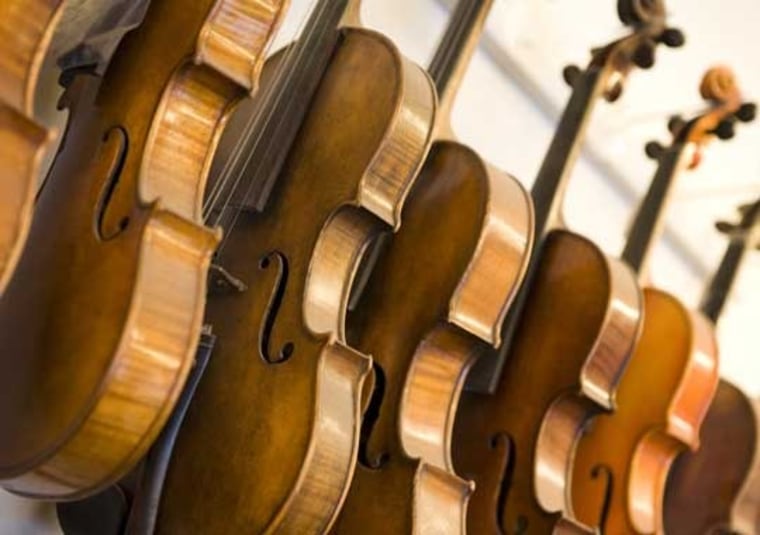
Violin makers of the future may be able to match the sound quality of a Stradivarius thanks to a pair of fungi that get their nutrition from the wood used to make the instruments.
The Swiss researchers and violin makers behind the project explain that ideal wood for violin tone is low density, with a high speed of sound and a high modulus of elasticity, which is a measure of the wood’s resistance to strain.
Some violin experts believe Italian instrument maker Antonio Stradivari used wood that grew in the colder climate of the late 17th and early 18th century that was low density and had a high modulus of elasticity.
Francis Schwartze with the Swiss Federal Laboratories for Materials Science and Technology has found that the fungi Physisporinus vitreus and Xylaria longipes decay Norway spruce and sycamore wood in such a way that it reduces wood density and maintains a high speed of sound.
All fungi will reduce the density of wood as they decay it and absorb its nutrients. But, for most fungi, this also reduces the speed that sound waves travel through the wood.
“The unique feature of these fungi is that they gradually degrade the cell walls, thus inducing a thinning of the walls. But even in the late stages of the wood decomposition, a stiff scaffold structure remains via which the sound waves can still travel directly,” he explained in a news release.
Even the modulus of elasticity is unaffected.
Schwatze collaborated with violin makers Martin Schleske and Michael Rhonheimer to build a violin with the fungal-treated wood. In a 2009 blind test against a 1711 Stradivarius, most people thought biotech violin was the Stradivarius.
In a recent talk at a medical conference, Schwatze said the team is now working to scale up the production method that could bring violins with high-quality sound to the masses.
John Waddle is a violin maker in St. Paul, Minnesota who has CT scanned numerous Stradivarius violins to measure the density of their wood and found “it varies all over the place,” he told me Tuesday.
“Stradivarius used a wide variety of wood. It didn’t all come from one tree and I don’t believe it came from a particular forest either,” he said.
While the logic behind the fungi — reducing density without damaging the other physical properties of the wood — is sensible, Waddle said there’s more to great instrument making than just the wood.
“I know that Martin Schleske can make really great sounding instruments … possibly another instrument of Martin Schleske with wood that wasn’t treated could have done the same thing in the test,” he said.
Nevertheless, he added, “I don’t want to discourage these people. It sounds like they are passionate about what they are doing, they believe in it. It’s great. More power to them.”
— via Discover Magazine
John Roach is a contributing writer for NBC News Digital. To learn more about him, check out his website. For more of our Future of Technology series, watch the featured video below.